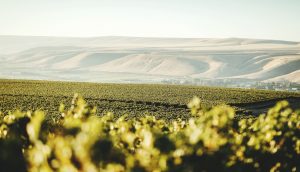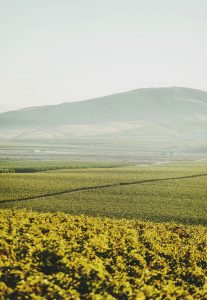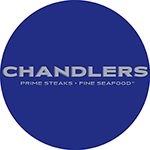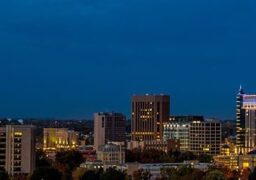Goose Gap is Washington’s newest American Viticultural Area!
The Alcohol and Tobacco Tax and Trade Bureau (TTB) will publish the final rule for Goose Gap AVA to officially define it as a designated wine grape-growing region.
The Goose Gap AVA contains a total of 8,129 acres. It is wholly located within the Yakima Valley AVA. and the larger Columbia Valley AVA. There are 1,800 acres of wine grapes split between two commercial vineyards. Sixteen varieties are planted, and the fruit is sold to more than 20 wineries.
“The AVA takes its name from a saddle of land known as ‘Goose Gap,’ which was named because it was a flyway for geese between rivers, providing hunters with an exceptional site for hunting,” explained Alan Busacca Ph.D., who wrote the AVA petition. “Goose Gap and the adjoining Goose Mountain, which is also within the AVA, create a rough triangle that traces the geography between Candy Mountain, Red Mountain, and Badger Mountain.”
Some of the defining characteristics of the Goose Gap AVA
- The orientation of Goose Mountain is east to west, whereas almost all nearby hills are northwest to southeast. For this reason, vineyards within the AVA are dominantly planted on north and northeast slopes. In contrast, virtually every other nearby vineyard is on a south or southwest slope. In general, the north and northeast slopes lead to less solar radiation and later ripening.
- The soils of the Goose Gap AVA are almost two-thirds Warden series. This is a considerably higher percentage compared to surrounding areas. These soils are wind-blown loess over layered or stratified silts and fine sands from the ancient Missoula Floods. They have rooting depths of six feet or more with no root-restrictive layers, altogether making them prized for vineyards.
“Our family started farming in the Columbia Valley in the early 1900s, and we always knew Goose Gap was a special site,” said Bill Monson, President of Goose Ridge Estate Vineyards & Winery, which is currently the only winery located within the AVA.
Goose Gap is Washington’s 19th AVA and comes on the heels of The Burn of Columbia Valley and White Bluffs in mid-June and Royal Slope and Candy Mountain last September.
To learn more about Washington Wine Country, visit www.washingtonwine.org.












